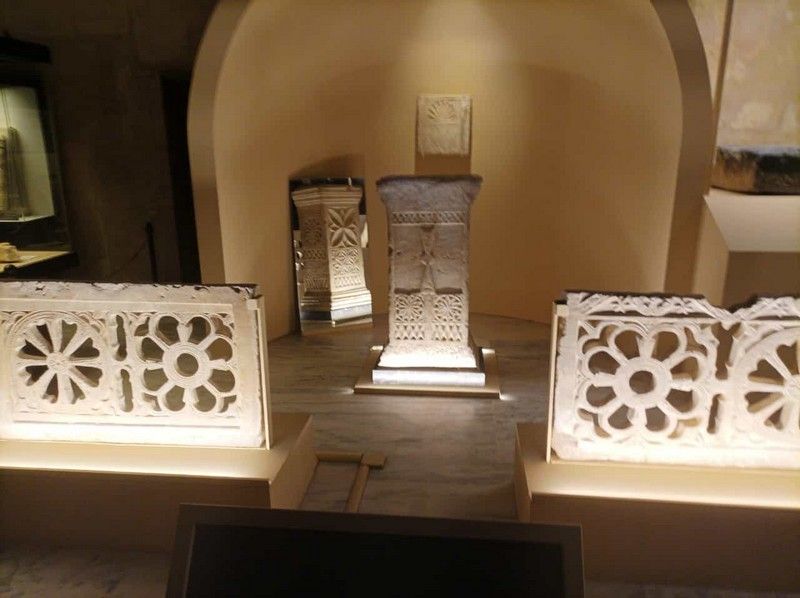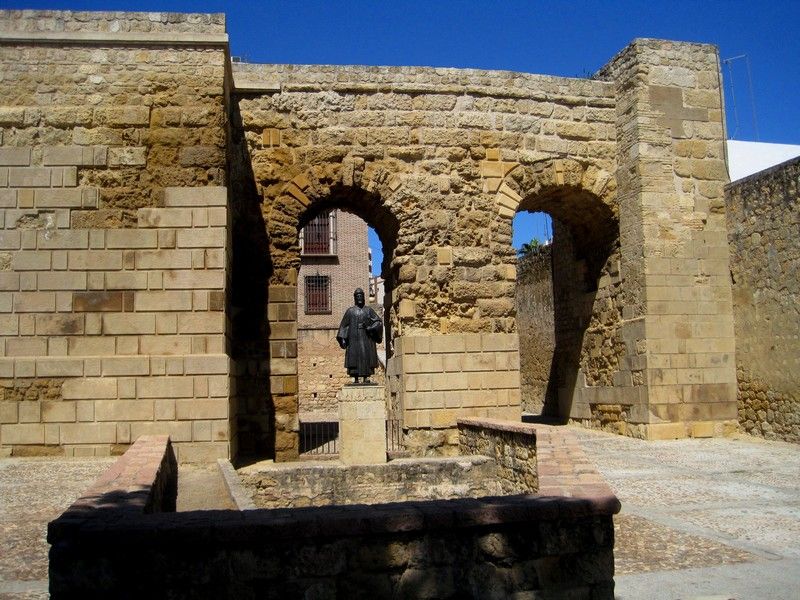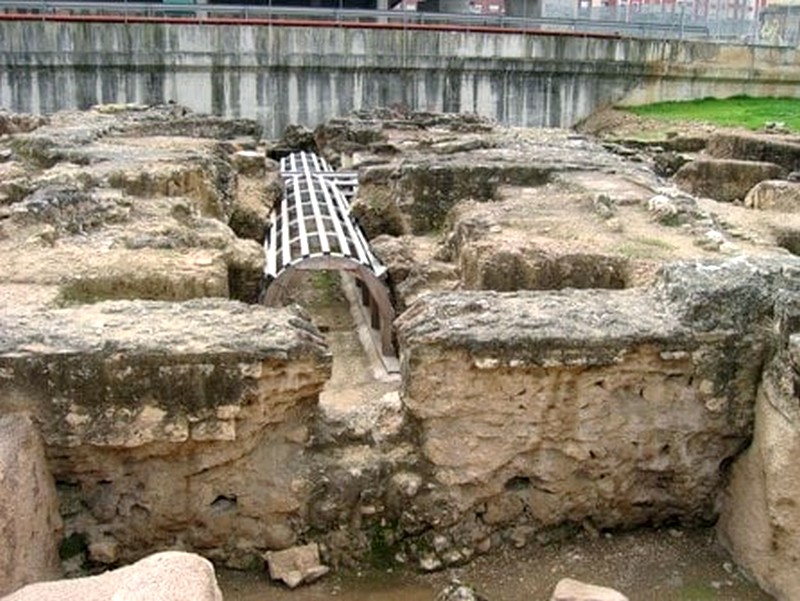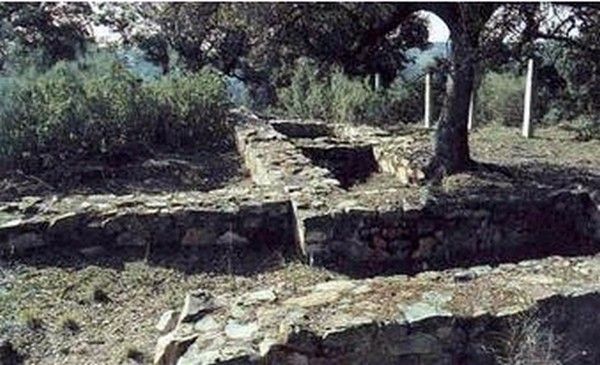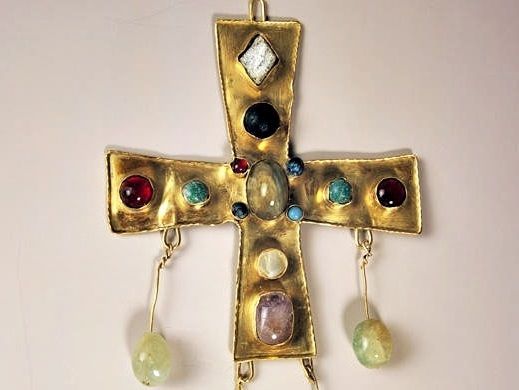MEZQUITA DE CÓRDOBA. COMPLEJO DE SAN VICENTE MÁRTIR

Thanks:
To our friend and collaborator María Dolores Gómez Zafra, interpreter Authorized No. 136 by the Córdoba Cathedral Council of the Córdoba Mosque-Cathedral Monumental Complex, who provided us with the text and part of the photos of this file, in her articles on the Mosque of Córdoba that at that moment we published in our RRSS.
Historic environment
On a Visigothic basilica dedicated to San Vicente Mártir, some late Roman and Byzantine structures and the Roman road network of the capital of Hispania Ulterior, and later Colonia Patricia, construction began around 785/786 on the  Abd al-Rahman I founding Mosque. We assume that its location obeyed the urban characteristics and layout, as well as the framework of royal power at that time (church, royal palace and other dependencies of the episcopal seat). And the few excavations carried out, due to the preservation of the temple), have reached the conclusion of the existence of an Episcopal See prior to the presence of Islam in the Peninsula.
Abd al-Rahman I founding Mosque. We assume that its location obeyed the urban characteristics and layout, as well as the framework of royal power at that time (church, royal palace and other dependencies of the episcopal seat). And the few excavations carried out, due to the preservation of the temple), have reached the conclusion of the existence of an Episcopal See prior to the presence of Islam in the Peninsula.
In the investigations carried out by D. Ricardo Velázquez Bosco, he came to discover part of the Visigothic Basilica dedicated to San Vicente, however, it was the architect and archaeologist Félix Hernández Giménez, curator of the monument between 1931-1936 who, based on written sources of Muslim chroniclers and historians, investigated the location of this basilica, finding some of its remains in a series of excavations in the founding Mosque of Abd al-Rahman I, part of the Patio de los Naranjos (Shan) and the east wall of said mosque. , locating and confirming previous constructions.
At present, according to the archaeological work carried out by D. Pedro Marfil, confirming this building complex that, together with the discovery of Santa Catalina, Rodrigo’s Palace, buildings of a civil and religious nature, corroborate various phases of occupation prior to the foundation of the Mosque of Abd al-Rahman I.
Description
D. Pedro Marfil, adding what was found to what was excavated by D. Félix Hernández, reached the following conclusions:
Existence of some buildings probably from the 5th century, occupation of these spaces in Byzantine times. Formation in the Visigothic period of the Basilica of San Vicente, whose findings in the 30s of the 20th century, underestimated then, are being confirmed.
- Important intramural enclave. Let us remember the enclave outside the walls of the palace of Maximiano Herculeo (296-297). Interpretations that some describe it as a late imperial complex and others, as an episcopal center promoted by Osio, (enclaves of Cercadillas, former lands of Campsa and Barrio de la Colonia de la Paz, -today Adif de Córdoba station-).</li >
- The founding mosque is adapted to the pre-existing urban framework and adapts both in structures and in its orientation.
- Recent excavations reveal important archaeological finds in the eastern wall and Abd al-Rahamn I street and Hisham I ablutions room, a fact that Félix Hernández has already confirmed.
 Let’s go back to the events that occurred between 1930 and 1936. Mr. Hernández excavating in different areas of the complex, in the part of the prayer room in the 4 of the 5 western aisles of Abd al -Rahman I, trying to find the remains of the church of San Vicente of the founding Mosque of Abd al-Rahman I, the very place of the aforementioned basilica. There is no written memory, but we know that “at great depths Roman mosaics and foundations of houses appeared; above, about 55 centimeters from the modern floor, the stump of a building with concrete floors and masonry walls, made up of three naves directed from east to west, whose total width did not exceed 12 meters”. This information It was given by his friend and colleague M. Gómez Moreno. In this same sense, Leopoldo Torres Balbás added: “more than a meter deep and under the current floor, mosaic pavements and remains of Roman constructions; above these, about 55 centimeters, a mortar floor and masonry walls of a building divided into three naves directed from east to west, whose total width did not exceed 12 meters. The head wall was not recognized, and in the middle of the day discovered, remains of a semicircular niche appeared”.
Let’s go back to the events that occurred between 1930 and 1936. Mr. Hernández excavating in different areas of the complex, in the part of the prayer room in the 4 of the 5 western aisles of Abd al -Rahman I, trying to find the remains of the church of San Vicente of the founding Mosque of Abd al-Rahman I, the very place of the aforementioned basilica. There is no written memory, but we know that “at great depths Roman mosaics and foundations of houses appeared; above, about 55 centimeters from the modern floor, the stump of a building with concrete floors and masonry walls, made up of three naves directed from east to west, whose total width did not exceed 12 meters”. This information It was given by his friend and colleague M. Gómez Moreno. In this same sense, Leopoldo Torres Balbás added: “more than a meter deep and under the current floor, mosaic pavements and remains of Roman constructions; above these, about 55 centimeters, a mortar floor and masonry walls of a building divided into three naves directed from east to west, whose total width did not exceed 12 meters. The head wall was not recognized, and in the middle of the day discovered, remains of a semicircular niche appeared”.
Among these excavations, the result of written sources, as well as field work, he discovered part of the basilica with a triple apse oriented from East to West, as is customary in all Christian temples. An early Christian mosaic was also discovered. This location can be seen in situ by opening a hole protected by a railing, as transparent methacrylate sheets have been installed without the need to go underground.
In the same way, a frontal of an early Christian sarcophagus dated between the years 330-335 came to light with  evangelical motives; baptismal font, crismon and other archaeological pieces…, pieces that can be seen in the Museum of San Vicente inside the extension of AlHakham II, on its western side, among which we can highlight an altar tenant, an altar table and a font baptismal, all three from the 6th century.
evangelical motives; baptismal font, crismon and other archaeological pieces…, pieces that can be seen in the Museum of San Vicente inside the extension of AlHakham II, on its western side, among which we can highlight an altar tenant, an altar table and a font baptismal, all three from the 6th century.
As we have verified, surveys were carried out in the Patio. Later in 1934, and in spite of the scarce economic endowments assigned, the investigation in the Patio de los Naranjos continued, finding remains of another building with associated Visigothic elements, the foundations of the minaret of Hisham I and the north wall of the Patio prior to Abd al -Rahman II. A sketch drawn by Samuel de los Santos is preserved.
Other more recent authors maintain that the remains found by D. Félix Hernández, would correspond to a construction complex as described by Pedro Marfil and Mr. Fernández Puertas, that it would be an atrium for the episcopalis audienceia, but without obtaining new data. necessary to exactly locate the investigated constructions in the Patio, although they provide an overall scheme.
Bibliography
F. Arce Sainz, “La supuesta basílica de San Vicente en Córdoba: de mito histórico a obstinación historiográfica”, Al-Qantara, 36, nº 1, 2015, p. 11-44.
Bermúdez, José Manuel, “El atrium del complejo episcopal cordubensis. Una propuesta sobre la funcionalidad de las estructuras tardoantiguas del patio de la mezquita de Córdoba”, Romula, 9 (2010), pp. 315-341.
Fernández-Puertas, Antonio, “Bosquejo sobre la labor científica de Don Félix Hernández Giménez”, Cuadernos de la Alhambra, 10-11 (1974-75), pp. 1-9.
Gómez-Moreno, Manuel, El arte árabe español hasta los almohades, Madrid, Editorial Plus-Ultra, 1951, Ars Hispaniae, III
Marfil, Pedro, “La basílica de San Vicente en la catedral de Córdoba”, Arqueología, Arte e Historia, 14 (2007), pp. 185-196.
Marfil, Pedro, “La sede episcopal de San Vicente en la santa iglesia Catedral de Córdoba”, Al-Mulk, 6 (2006), pp. 35-58.
Ocaña, Manuel, “La basílica de San Vicente y la gran mezquita de Córdoba. Nuevo examen de los textos”, Al-Andalus, 7, 2 (1942), pp. 347-366.
Ocaña, Manuel, “El mito de la Basílica de San Vicente de Córdoba”, en Manuel Castillejo (ed.), La mezquita de Córdoba. Textos para su historia, Córdoba, Publicaciones del Monte de Piedad y Caja de Ahorros, 1986, pp. 129-134.
Sánchez-Ramos, Isabel, “Sobre el grupo episcopal de Corduba”, Pyrenae, 40, 1 (2009), pp. 121-147.
Sánchez-Velasco, Jerónimo, Elementos arquitectónicos de época visigoda en el Museo Arqueológico de Córdoba. Arquitectura y urbanismo en la Córdoba visigoda, Córdoba, Museo Arqueológico y Etnológico de Córdoba, 2006.
Santos-Gener, Samuel de los, “Las artes en Córdoba durante la dominación de los pueblos germánicos”, Boletín de la Real Academia de Córdoba, 78 (1958), pp. 147-192.
Vicent, Ana María, “Perfil científico y humano de D. Félix Hernández”, Corduba, 3, I-3 (1976), pp. 165-198.
Portals
Basílica cristiana de San Vicente
La Iglesia hispanovisigoda de San Vicente
¿Hubo un precedente cristiano en el origen de la mezquita de Córdoba?
Vídeo: San Vicente Mártir











